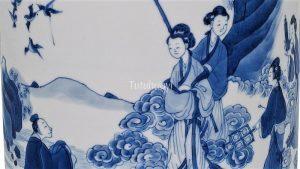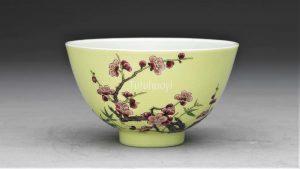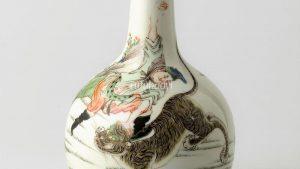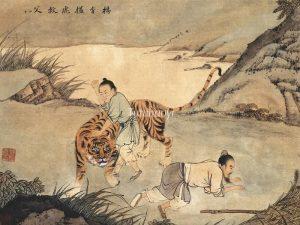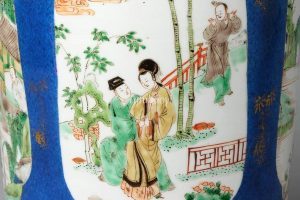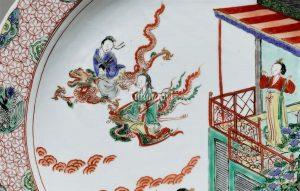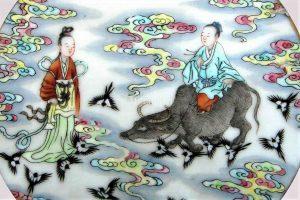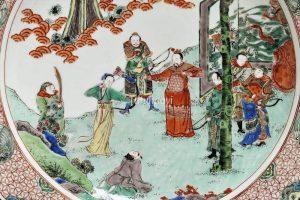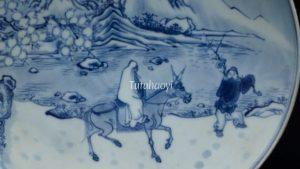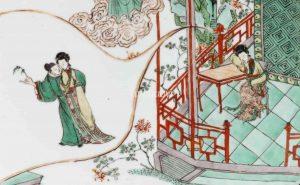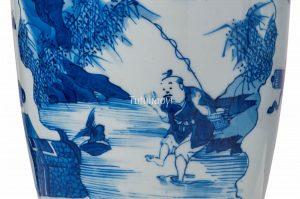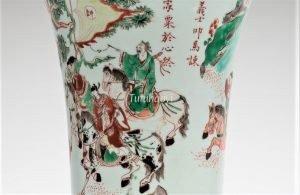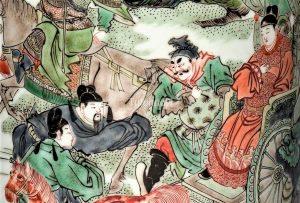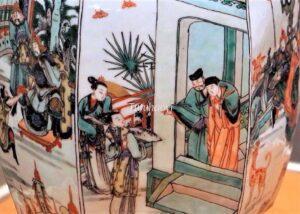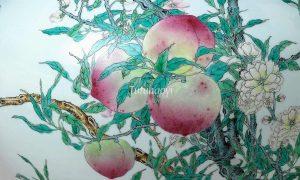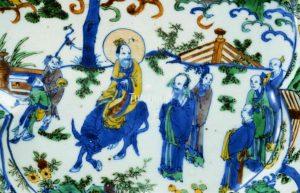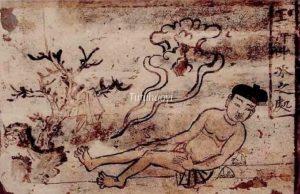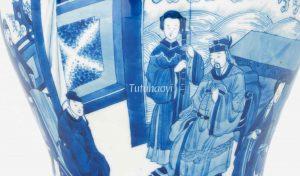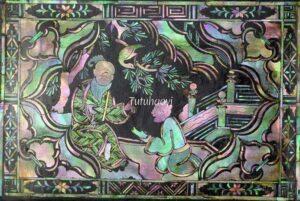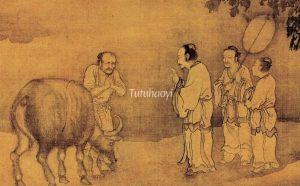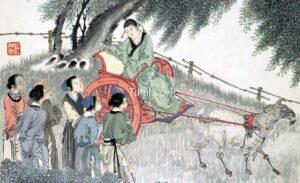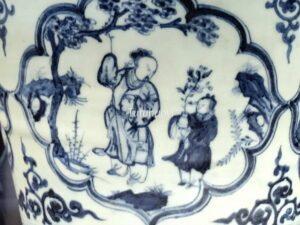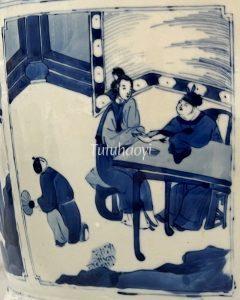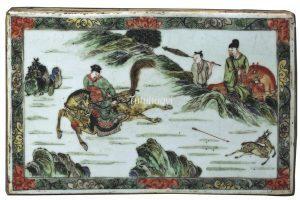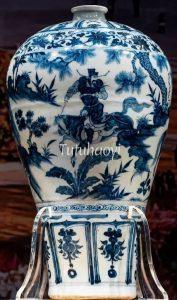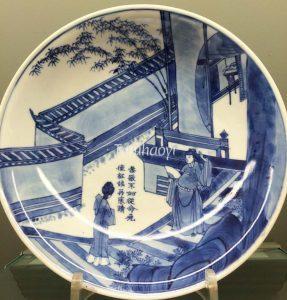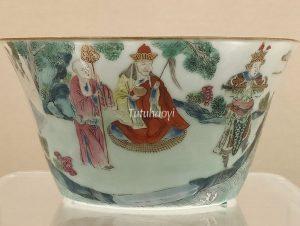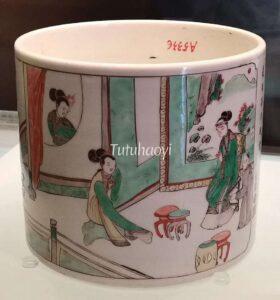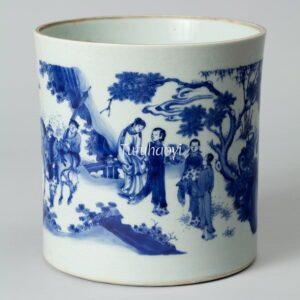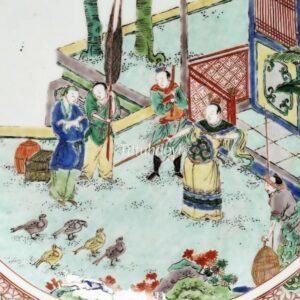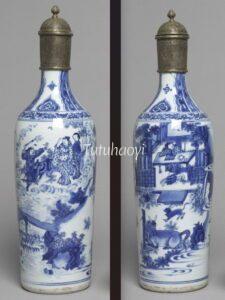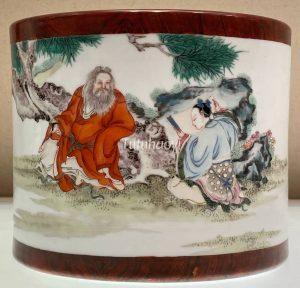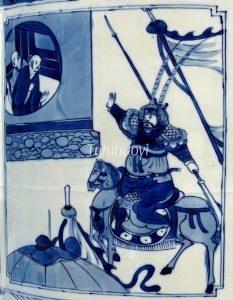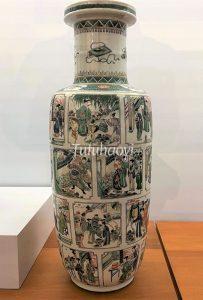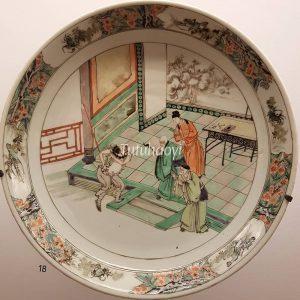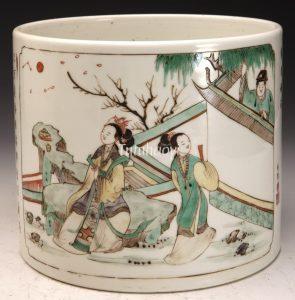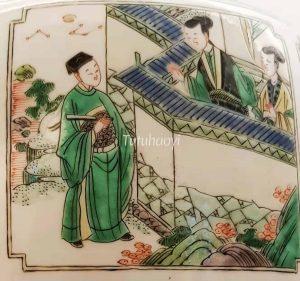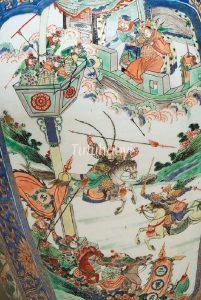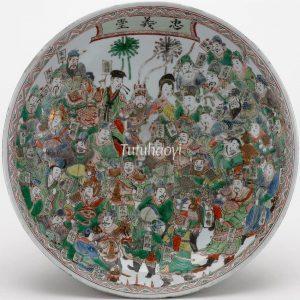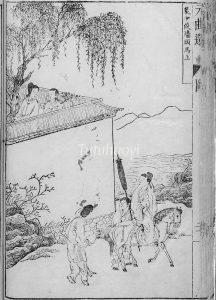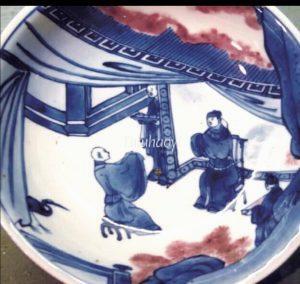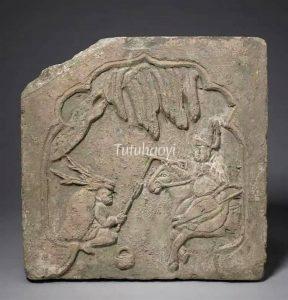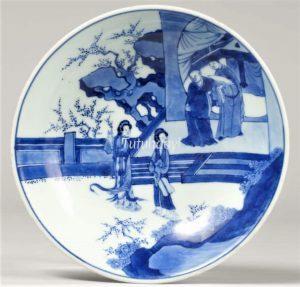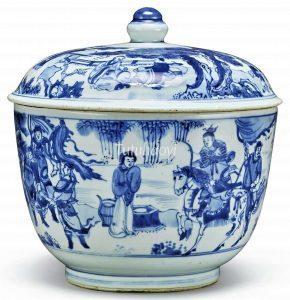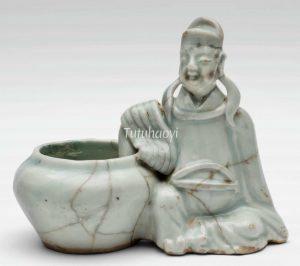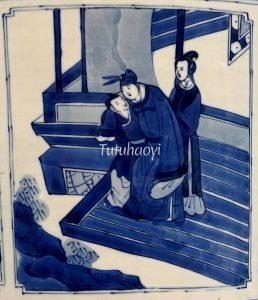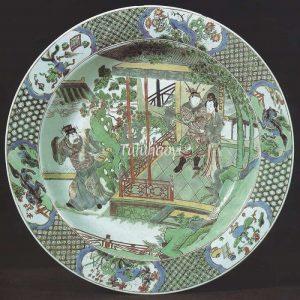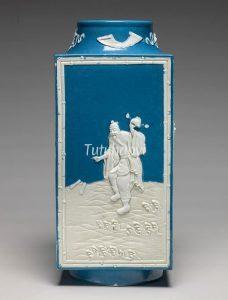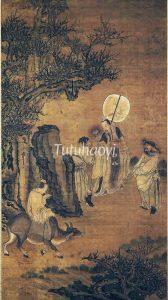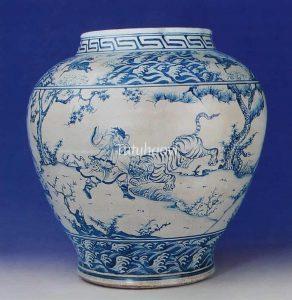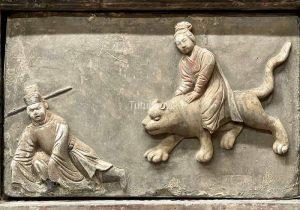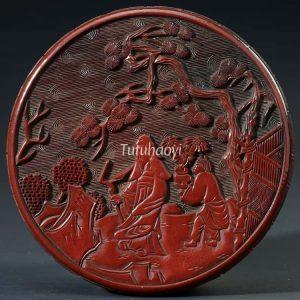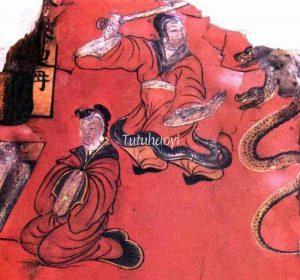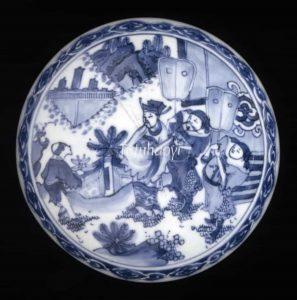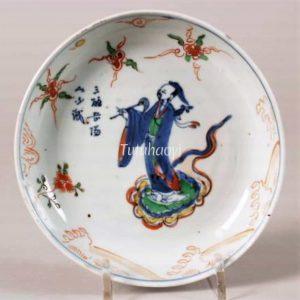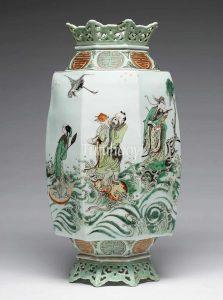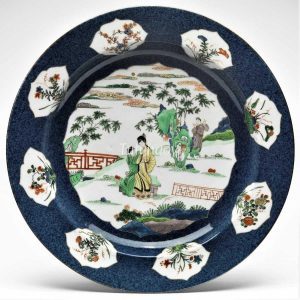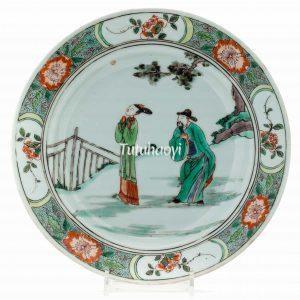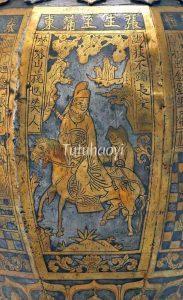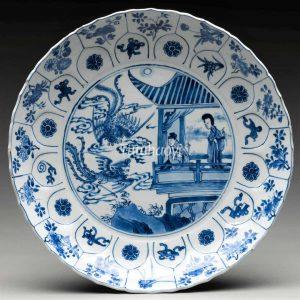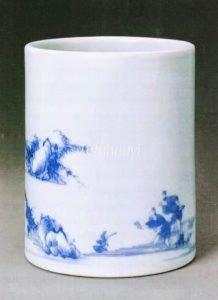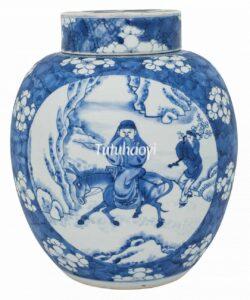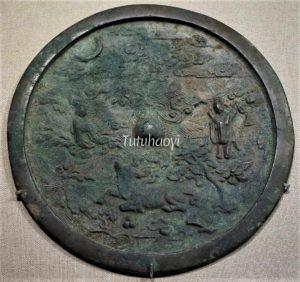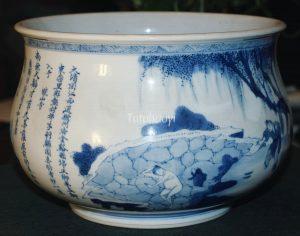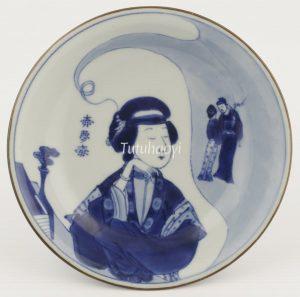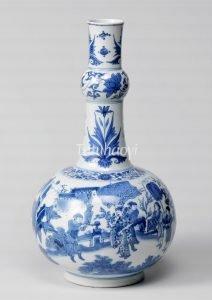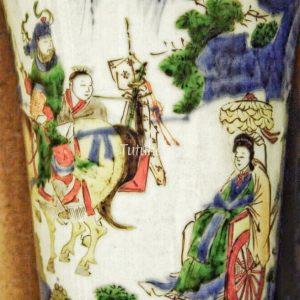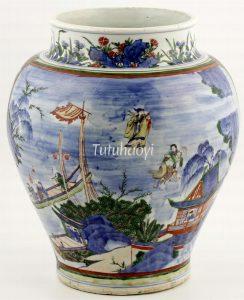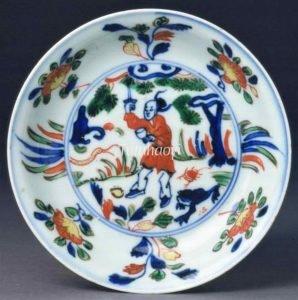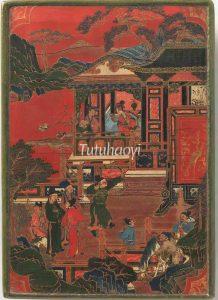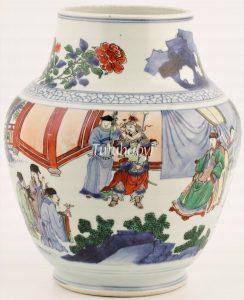Showing Results Containing
The Chinese Valentine’s Day, Qixi Festival (七夕节), is just around the corner. It falls on the seventh day of the seventh month of the traditional Chinese year. Dr Yibin Ni has conducted comprehensive research on this topic and has written an articl...
Have you ever wondered why the image of the prunus has been a popular motif in Chinese decorative art? Why do Chinese literati love to write poems about plum blossoms and paint them in their art works? Dr Yibin Ni will explain to you the symbolic ...
‘Wu Song slaying the tiger’ is a popular fictional story among Chinese people. But it’s hardly noticed that this story scene has been chosen in Chinoiserie decorative art in Europe. Here is Dr Yibin Ni’s interesting research and his unique insight...
‘Yang Xiang trying to throttle the tiger to rescue her father’ is a well-known story passed down from generation to generation in ancient China. However, Yang Xiang has sometimes been portrayed as a male figure on traditional Chinese artworks. Let...
The story scene comes from a marvel play Legend of the Jade Hairpin, which is not to be confused with the scene in Romance of the Western Chamber. Read the following article to find out details of the story and how this figural scene is depicted.<...
Correctly identifying figures is crucial to deciphering an obscure story scene. Looking at this featured image, for example, some may think that the two figures in non-specific attires on a dragon and a phoenix are anonymous Daoist immortals. But ...
On the seventh day of the seventh month of the lunar Chinese year, young men and women will celebrate their traditional ‘Valentine’s Day’, Qixi Festival (七夕节). The custom can be traced back to an ancient story.
Congratulations on art historian Dr Yibin Ni’s new research into a rare story scene in Chinese pictorial art, which may have puzzled contemporary museum curators and porcelain collectors. Dr Ni has traced the art historical context in which this r...
A literati theme with the image of a scholar riding in a snowscape with branches of plum blossoms in the vicinity has been very popular in traditional Chinese visual culture and literature. But who is the scholar in the scene? Art historian Dr Yib...
The Peony Pavilion is a famous play written by Tang Xianzu in Ming Dynasty. There are very few figural paintings depicting this play on Kangxi famille verte porcelain. Dr Yibin Ni first identified the figures and the scene on a porcelain dish in t...
People who are not familiar with Chinese history and parables may have the impression that the above image is a genre painting of fisherman’s daily life. But in fact, there is more meaning to it. Dr Yibin Ni will explain the story in detail and ho...
The following article is a discussion of the substitution of a mythical beast for a horse as Grand Duke Jiang’s mount on three classic porcelain vases adorned with the same story scene of ‘Bo Yi and Shu Qi Trying to Stop the Mighty Zhou Army’. It ...
Through analysing a famous theme that depicts Bo Yi and Shu Qi Stopping the Zhou Army, Dr Yibin Ni has compared a number of porcelain vessels from Ming and Qing dynasties, and demonstrated his unique insight which can facilitate the correct dating...
This is a republication of Dr Yibin Ni’s article written in Chinese “明末清初瓷器上张生的‘凝视’和莺莺的挑战”(Gaze from Scholar Zhang and the response from Lady Cui Yingying: a discussion of figural depiction on porcelains from Late Ming to Early Qing dynasty)...
In Chinese culture and pictorial art, the peach fruit is often used to wish for long life on birthday parties. How does this fruit become associated with the idea of longevity? Here is Dr Yibin Ni explaining to us the origin of legendary stories r...
Have you ever wondered why images of an old scholarly man riding a buffalo are often depicted on Chinese antiques? What is so special about this man who looks highly respected and followed by yet still sitting on a buffalo’s back? We hereby invite...
Have you wondered why you often see an image of a man lying or ‘dancing’ beside a large fish on Chinese antiques? Is it referring to some figure and story in ancient China? Here is Dr Yibin Ni explaining to us the meaning of this touching story th...
Have you wondered why the same story scenes were painted differently on Chinese artworks? How was it painted to present women falling in love on Chinese antique porcelains? Read on to see what Dr Yibin Ni has to say with his analysis.
Have you ever seen such an image and wondered why a young man is holding a shoe and kneeling down in front of an old man? Is there any historical event relating to the shoe and such scene? Read on to see how Dr Yibin Ni deciphers the figures and s...
The story of the statesman Bing Ji (丙吉) inquiring about a panting buffalo in ancient China has been illustrated in various forms in traditional Chinese art. It is meant to praise high-ranking officials who can prioritise their duties for their cou...
Do you wonder why there is a goat drawing a carriage, rather than a horse, on traditional Chinese art pictures? Why are there so many people watching someone in a chariot? What is the story behind it? Here is what Dr Yibin Ni has to tell you.
Images of Tao Yuanming Appreciating Chrysanthemums, like many other traditional historical themes, are often mistaken as a mere ‘flowering-picking’ scene, or, worse, simply a ‘figure painting’. Let’s see an example.
This is Scene Four of Act Three of The Romance of the Western Chamber (Xixiang Ji 西厢记), a popular Chinese drama written by playwright Wang Shifu 王实甫 (12...
The Royal Hunt at Xutian is a pivotal moment in Chapter 20 of Romance of the Three Kingdoms (《三国演义》) by Luo Guanzhong (罗贯中). This episode highlights Cao Cao (曹操) as a domineering minister who ‘held the emperor hostage to command the feudal lords.’
In this scene, Cao Cao arranges a hunting...
The story comes from the Records of the Grand Historian (Shiji 史记), specifically the biography of the Marquis of Huaiyin. It recounts an episode from 206 BCE, during the power struggle between the Chu and Han kingdoms.
Han Xin 韩信, well-versed in military strategy, joined Liu Bang 刘邦 duri...
This is Scene Two of Act Two of the Chinese classic drama Romance of the Western Chamber (西厢记 Xixiang Ji), written by the Yuan playwright Wang Shifu (1250–1336)....
The Legend of the White Snake is one of China’s four great folktales, the others being Lady Meng Jiang, Butterfly Lovers, and The Cowherd and the...
This is from Scene Two of Act Four of the Chinese popular drama Romance of the Western Chamber (西厢记 Xixiang Ji).
Miss Cui Yingying 崔莺莺 and Zhang Junrui (张君瑞, also called Scholar Zhang 张生) were deeply in love. Yingying’s maid, Hongniang 红娘, frequently escorted her to Scholar Zhang’s study Continue Reading
The true name of Guiguzi (鬼谷子) remains unknown due to insufficient historical records, although some suggest the name ‘Wang Yi’. Legend has it that Guiguzi was a figure from the Warring States period (475–221 BCE), renowned as both a recluse and a political thinker, strategist, and Daoist. He is considered the founder of...
This is Scene three of Act Four of The Romance of the Western Chamber (Xixiang Ji 西厢记), a famous Chinese drama written by playwright Wang Shifu 王实甫 (1250–1336) in Yuan dynasty.
Zhang Gong 张珙 (styled Junrui 君瑞, also known as Scholar Zhang), and Madame Cui’s daughter, Cu...
Jia Chang (贾昌 712–810) from the Tang Dynasty was renowned for his exceptional skills in training roosters for cockfighting. His legendary story is recorded in the Extensive Records of the Ta...
This is Scene Four of Act Four of The Romance of the Western Chamber (Xixiang Ji 西厢记), a famous Chinese drama written by playwright Wang Shifu 王实甫 (1250...
Zhang Liang (张良, d. 189 BCE) was an ambitious young man and was looking for opportunities to overturn the emperor at that time. He ran into a guru strategist Lord Yellowstone (黄石公 Huang Shigong) by the Yi Bridge 圯桥, where Lord Yellowstone tested Zhang three times for his humility and perseverance before taking h...
This is Scene One of Act Two of the Chinese classic popular drama Romance of the Western Chamber (西厢记 Xixiang Ji), written by the Yuan playwright Wang Shifu (125...
The Chinese classic drama Romance of the Western Chamber (西厢记) depicts a romantic story of a young couple in the Tang dynasty. The name of the play has also been translated into The Story of the Western Wing, The West Chamber, and Romance of the Western Bower, etc. It stands as one of ...
This is Scene Two of Act Two of the Chinese classic popular drama Romance of the Western Chamber (西厢记 Xixiang Ji), written by the Yuan playwright Wang Shifu (1250–1336).
Sun Feihu 孙飞虎, a local bandit, was attracted to Miss Cui Yingying (崔莺莺)’s beauty and wanted to abduct her from the Buddhist monastery wh...
This is from Scene Three of Act Three of the Chinese classic drama Romance of the Western Chamber (西厢记 Xixiang Ji), written by playwright Wang Shifu 王实甫...
This is from Scene Three of Act One of the Chinese classic popular drama Romance of the Western Chamber (西厢记 Xixiang Ji), written by the Yuan playwright Wang Shi...
Qin Shubao (秦叔宝, or Qin Qiong 秦琼, ?–638,) and Luo Cheng 罗成 were cousins, and they were characters in the Qing Dynasty novel Complete Biography of Explaining the Tang Dynasty 《说唐演义全传》 (Shuo Tang Yanyi Quan Zhuan, author unknown).
Luo Cheng was invited by General Yang Yichen 杨义臣 to guard an extremely diffic...
Water Margin, also known as Outlaws of the Marsh or All Men Are Brothers, is a classic Chinese novel written during the Ming Dynasty. It is considered one of the Four Great Classical Novels of Chinese literature.
The authorship of the Water Margin has always been a subject of de...
This story scene originates from one of the four famous romantic plays in Yuan dynasty, Pei Shaojun on horseback meeting Li Qianjin over the garden wall (also known as On Horseback and over the Garden Wall) 裴少俊墙头马上, which was written by playwright Bai Pu (白朴 1226 – after 1306).
Pei Shaojun ...
This is Scene Two of Act One of the Chinese classic popular drama Romance of the Western Chamber (西厢记 Xixiang Ji), written by the Yuan playwright Wang Shifu (125...
Deer were reputed to live for a very long time and hence, like Continue Reading
This scene is from one of the most famous Chinese dramatic works, Romance of the Western Chamber 西厢记, which was written by the Yuan playwright Wang Shifu (王实甫 12...
This scene was from a popular play ‘The Story of the White Hare’ (Bai Tu Ji 白兔记) and was much admired during the Ming dynasty.
Liu Zhiyuan 刘知远, the hero of the play set during the turbulent Five Dynasties (907–960), became an orphan when he was a teenager. His affluent neighbour looked after him and later...
Li Bai (李白, courtesy name Taibai 太白, 701–762) from Tang dynasty (618–907) was one of the greatest poets in Chinese history. He was also famous for his love of wine and was extremely productive in writing poems while he got tipsy.
Typically, the scene in Fig. 3 depicts one of the Eight Immortals of the Win...
This is Scene Four of Act Two of the Chinese classic popular drama Romance of the Western Chamber (西厢记 Xixiang Ji), written by the Yuan playwright Wang Shifu (12...
Dong Zhuo (董卓 d. 192), a tyrannic warlord rising to power at the end of the Han dynasty, caused great concern among courtiers and officials. Wang Yun (王允), the Minister Over the Masses (司徒 Situ), was entrusted to figure out a plan to bring him down. Dong Zhuo was particularly powerful because he managed to ally ...
Cao Guojiu (曹国舅) is one of the later comers among the legendary Eight Daoist Immortals and has the fewest colourful stories attached to him. During the Yuan dynasty (1271–1368), ...
‘Li Mi (李密 582–619) Hanging His Books on His Ox Horns’ is one of the inspirational self-improvement stories in ancient China. It was adopted in the famous Three-Character Classic (三字经 San Zi Jing), written in the 13th century. The primer served as children’s first textbook in elementary...
Nicknamed xingzhe (行者), ‘Pilgrim’ or ‘Traveller’, Wu Song (武松) is a popular fictional figure well-known for his slaying a tiger single-handedly after he was into...
Early in Jin dynasty (晋 265–420), Yang Feng 杨丰 and his teenage daughter, Yang Xiang 杨香, were harvesting the millet crops in the fields when he was attacked by a tiger. Th...
Tao Yuanming (陶渊明, 365–427), also known as Tao Qian 陶潜, the paragon of ‘Fields and Gardens poetry’, spent most of his life as a hermit in a cottage in the countryside, reading, drinking wine, and writing poetry in an unmannered style. He had a unique eye for the beauty and serenity of the natural world c...
Sunshu Ao (孙叔敖, c. 630 – c. 593 BCE) was a hydraulic engineer and politician during the Eastern Zhou Dynasty (770-258 BCE). When he was a child, he came across a snake one day. The snake was unusual because it had two heads. According to the legend, anybody who saw such a snake would soon die. Sunshu killed the sna...
Pun Design :
Official Hat + Wine Vessel
Punning Details:
The combination of ‘jia 加 putting on’ and ‘guan 冠 hat’ – ‘jia guan 加冠’ is a pun on ‘jia guan 加官’, meaning ‘receiving an official title...
As a young man, Lv Dongbin (吕洞宾, or Lü Dongbin) passed several rounds of civil-service examinations and was twice appointed as a county magistrate. After being bored with officialdom, he went to become a recluse in the mountains. Not until he metContinue Reading
Zhongli Quan (钟离权, or 汉钟离 Han Zhongli) is regarded as the most eminent among the Daoist Eight Immortals. Respected as ‘Zhengyang Zushi (正阳祖师)’ or the ‘Grand Master with Pure Yang Energy’, he is one of the founders of the northern school of the Complete Realisation (Quanzhen jiao 全真教) S...
Legend of the Jade Hairpin (Yu Zan Ji 玉簪记) is a Ming-dynasty ‘marvel play’ which was the major drama genre of the time. The play, consisting of thirty-three scenes, was written by Gao Lian (高濂 fl. 1573-1581) around 1580 and remained to be a popular classic for the following three hundred years. It is a Shakespea...
This is a scene from a popular traditional play ‘A Set of Interlocking Stratagems (连环计)’.
The war lord Dong Zhuo (董卓, ? – 192 CE) became a senior minister in the Han court. His tendency to dominate the young sovereign, Emperor Xian of Han (汉献帝, 181–234 CE), gave other ministers cause for concern. They asked Wang Y...
Young scholar Zhang Junrui (张君瑞, also called Zhang Sheng 张生) is the male protagonist in the famous ancient Chinese play, Romance of the Western Chamber (西厢记 Xixiang j...
Duke Mu of the Qin State (秦穆公, died 621 BCE) was one of the so-called Five Hegemons (五霸 wuba) in the Spring and Autumn Period (770 – 476 BCE) (春秋 chunqiu). He had a daughter named ‘Nongyu (弄玉, meaning Playing Jade)’, who was a talented musician excelling at playing the sheng (笙 mouthorgan...
The story scene refers to an old Chinese saying: in the fight between the sandpiper and the clam, the fisherman has the best of it. This parable came from an ancient Chinese text entitled ‘Strategies of the Warring States (战国策 Zhanguo Ce)’. The book contains anecdotes of diplomacy and warfare during the Warring ...
Meng Haoran (孟浩然, c. 690–740) is one of the most renowned poets in Tang dynasty (618–906). He started off pursuing a civil service career and then abandoned it to concentrate on poetry. He was a major influence on other Tang and later poets because of his innovative focus on nature. There is a play attributed to the note...
The seventh day of the seventh month of the traditional Chinese year is the Chinese ‘Valentine’s Day’, Qixi Festival (七夕节). The custom can be traced back to an ancient story about a weaver girl and a cowherd:
Once upon a time, one of the daughters of the Lord of the Heaven lived on the east side of the Mi...
Wang Xiang (王祥 185–269) served as the Grand Protector (taibao 太保) in the Western Jin court (西晋 265–316 CE) and, as a significant politician, has his biography in the Book of Jin (jinshu 晋书), an official historical text covering the dynasty’s history. When Wang Xiang was a boy, his mother passed away. Hi...
‘True love conquers all’ is the theme of the Peony Pavilion (牡丹亭 Mudan Ting), a musical play of fifty-five scenes written by Tang Xianzu (汤显祖, 1550–1616) in Ming...
The main figure in the scene is a dignitary, often gripping a hu (笏) tablet in his hands, which an official uses to take notes when he has audience with the emperor in court. He is usually sheltered by page boys erecting some fans or a parasol or guarded by a soldier holding a weapon with an iron melon on the to...
This scene is an episode from the Ming drama ‘The Story of the Girl Holding ...
The Ming-dynasty play The Story of the Blue Robe (青袍记 Qingpao ji, also called《梁氏父子传胪记》) tells the story of how Lv Dongbin (吕洞宾 Lü Dongbin or 吕纯阳), one of the Continue Reading
In traditional Chinese customs, the fifth day of the fifth month of the lunisolar calendar is regarded as one of the most dangerous days of the year when evil spirits and hazardous creatures lurked around. Notably, five noxious creatures were identified, known as ‘Continue Reading
Li Yuan (李渊 566–635 CE) excelled at horse-riding, archery, and calligraphy as a young man. He was to be the future founder (reigned 618–626 CE) of the Tang dynasty (618–907 CE). Miss Dou was exceptionally smart and her father Dou Yi 窦毅, the governor of Dingzhou, was very particular about the quality of his future son-in-...
The story scene is originated from an anecdote dating back to the Tang dynasty (618-907). Cui Rong (崔戎, 780-835) is a statesman who is important enough to have a position in the ‘Biographies’ section in the official histories The Old Book of Tang (jiu tang shu 旧唐书), completed in 945, and the New Book of Tang (
